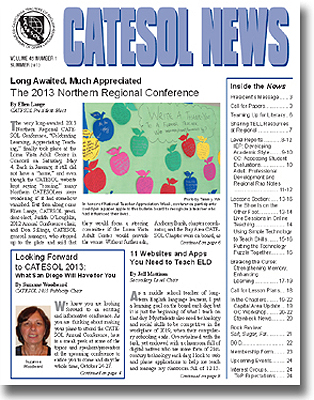

Assessing Student Evaluations: Where’s
the Rubric?
by Anthony Halderman
“Yeah, students’ evaluations are only one part of a peer evaluation, but it’s a very important part,” says a veteran instructor and member of Cuesta College’s union executive board.
In slight contrast, a former Cal Poly University colleague of mine suggests that student evaluations can only assesses a minor portion of an instructor’s classroom performance. This former Poly professor feels a classroom visitation by another instructor provides better assessment of an instructor’s classroom performance.
So then, what role do student evaluations play in an overall peer evaluation?
Well, actually both positions hold some truth. According to Dr. Julian Crocker,
San Luis Obispo County Superintendent of Schools, many districts are re-evaluating
and emphasizing the process of student evaluations in the peer evaluation
process. Along with test scores and measurable student performance, student
feedback/evaluations provide insight into an instructor’s performance.
However, even though many of us agree that student evaluations of an instructor play a role in the whole peer evaluation process, few of us would agree on the exactly how much weight student evaluations should carry. I even asked a dean of a community college if we had a rubric clearly indicating how student evaluations are weighted in the peer evaluation process. Of course, this dean doesn’t have one.
The general approach to student evaluations seems to allow the peer evaluators to weigh the importance of the student evaluations using their own personal discretion. In fact, I personally know one peer evaluator who upon seeing weak student evaluations told the evaluee, “These are some of the lowest student evaluations I’ve seen in a while.” This one particular evaluator continued to focus on the “low” student evaluations, and used the student evaluations as evidence that the evaluee needed to improve her teaching performance. Yet, this very same evaluator who upon seeing very respectable student evaluations with a different instructor said, “So. They’re just students. I’m the professional.” This particular peer evaluator went on to completely dismiss very respectable student evaluations, much to the surprise of the evaluee. How can student evaluations carry significant weight in one peer evaluation, but little weight in another?
This vacillating, inconsistency, and at times just plain cherry picking,
has prompted me to reflect on the meaning, value, and importance of student
evaluations/feedback. Perhaps my former Cal Poly colleague would agree that
student evaluations should carry only a modest significance because many university
students have already demonstrated effective student skills. The success and
retention rates at universities aren’t as low as some ESL programs in
community colleges.
However, I agree with the Cuesta College professor, and executive board member,
that student evaluations are critical. If the ESL population at your community
college is similar to other ESL programs, you’re probably aware that
the ESL population has low rates of success and retention. In fact, I addressed
low ESL rates of success and retention in a previous CATESOL News 2008 article
titled, “More Edutainment, Please.” In this article, I suggest
one way to improve success and retention is making second language acquisition
fun and exciting. Lecture-heavy courses will surely put many of our students
to sleep.
Our ESL student body needs to learn and be tested, but they also need to enjoy their courses. Student evaluations provide critical insights into how their courses are progressing: the higher the student evaluations, the higher the success and retention.
So the next time you have a scheduled peer evaluation, be sure to ask your
evaluator, administrator, union representative, and/or colleague, exactly
how are the student evaluations weighted? Where’s the rubric?
Editor’s note: The CATESOL Board has decided that this topic is
worth pursuing. CC level instructors will get together to write a rubric that
can be proposed to evaluators, administrators, union reps, and colleagues.
Contact the current Community College Level Chair, Pat Boquire pboquire@glendale.edu,
for more information.
Anthony Halderman has over 20 years ESL teaching experience.

Home | ESL |Writing & Publishing| Halderman Photographs | Real International Stories | Music | Textbooks | anthonyhalderman.com | Halderman Award | E-mail
online education, composition in ESL, writing for ESL students, ESL writing and composition. CATESOL, CATESOL News, ESL newsletter, newsletters, Anthony Halderman, anthonyhalderman.com, ESL, English teacher, English instructor, real stories, educational tool, education, English instruction, ESL information, Cuesta College, San Luis Obispo, California, reading textbook, learn english, online web page, on-line quizzes, Halderman faculty page, Kendall Hunt publishing, real international stories, ESL lessons, english lesson, interesting textbook, ESL articles, ESL English research, international perspective, student-generated stories, students essays, student compositions, real people, unique stories and experiences, Halderman photographs, SLO, photos of california, photos of the central coast, travel, traveling,